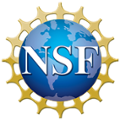This tutorial aims to provide researchers with a comprehensive introduction to the latest reproducible Machine Learning (ML) workflows and tools available through the NSF-funded Tapis v3 Application Programming Interface (API) and User Interface (UI). Through hands-on exercises, participants will gain experience in developing ML workflows and deploying them on Jetstream resources.
Throughout the tutorial, we will focus on utilizing various Tapis core APIs, as well as more specialized APIs: the Tapis Workflows API and Tapis Pods API, all within the user-friendly TapisUI. These production-grade services are designed to simplify the creation and as facilitation of trustworthy, reproducible scientific workflows.
This tutorial aims to empower researchers to efficiently develop, deploy, and maintain their own ML workflows. Additionally, it will introduce advanced topics in Tapis and ML, such as ML-Ops and benchmarks, by discussing the real-world applications and use cases.
Target Audience: The audience for this workshop fits into three categories:
- Researchers that utilize national, campus and local cyberinfrastructure resources and wish to do so in a reproducible, scalable and programmable manner.
- Cyberinfrastructure specialists such as research software engineers (RSE), gateway providers/developers and infrastructure administrators. People in these roles can utilize open source technologies and state-of-the-art techniques to enable portable, reproducible computation.
- Cyberinfrastructure directors, managers and facilitators that are looking for solutions to aid and educate their institutional researchers in order to better leverage local and distributed computational and cyberinfrastructure resources.
Audience Prerequisites: Attendees must use their own laptop for the hands-on part of the tutorial. Attendees should have TACC accounts or use day-of training credentials.
Authors: Joe Stubbs, Anagha Jamthe, Nathan Freeman, Christian Garcia, Steve Black and Sean Cleveland.




